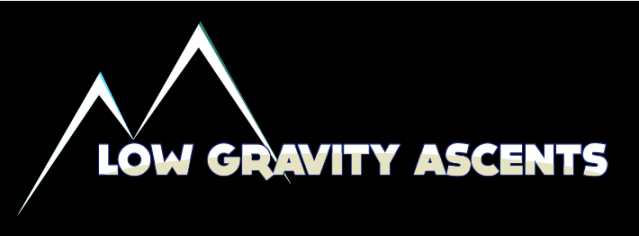If you haven’t figured it out by now, I’m completely addicted to climbing. Like, not just that I really like it, but actually addicted. I can’t go more than 2 days without climbing, and that includes the days after a competition or 3 days straight of climbing in Red Rocks. I neeeeed it. Just take a look at my DudesWithTents blog.
My Training for Rock Climbing
I really want to write about my training, but realistically, I’m not “training”. I’m simply just climbing. I do have a strategy that I use to pick my routes and my modality of climbing for the day, which are simiply the same principles I follow from The Movement: avoid effort, push it when I can, take it easy when I have to (an over simplification). That’s a whole ‘nother post by itself and I think worth taking a look at, but I’m simply not “training” for climbing…yet…thanks to my previous life as a gym rat. But I’m fast approaching the difficulty grades in which “training” is required (in only a year). Once I start that, I will document it and let all of you fine individuals know how it’s going….as if you care.
Anyways, this post IS about an actual training goal that I recently set for myself. It’s about a goal that definitely has its place in a climbing program. This goal is the almighty 1-arm pull-up. BANG!! (because “BOOM” has gotten too much attention over the past couple years)
Current One-Arm Pull-Up Status
Right now, I am not even close to a strict 1-arm pull-up. However, if I add just a tiny bit of assistance (much less than most people would need) by using my opposite hand to pull on a rope or pinch block or baseball attachment, I’m able to do one (or a couple depending on the assitance). This is not surprising given that: I’ve written about a 20 pull-up in a row strategy, I’ve done 18 pull-ups in a row in a TSC competition, I’ve done pull-ups with up to 32kg hanging from my waist, I have several YouTube videos with several different pull-up varieties, and of course, a year’s worth of climbing.
But, none of that means squat (bad pun) since I have a hard time moving even a little bit when I get rid of the assistance.
One-Arm Pull-Up Training Hypothesis
I will continue doing assisted one-arm pull-ups, that should be obvious. However, I think that “the secret” to accomplishing this goal is going to be assistance bands to deload my bodyweight. Not only will they give me a variety of ways to deload my bodyweight, but they will give me the most assistance at the bottom of the pull where I am weakest.
It has been documented by many many clients of The Movement that deloading bodyweight in order to increase total movment volume is one of the fastest ways to progress. Makes sense, doesn’t it? I can only do 2-5 assisted one-arm pull-ups and zero unassisted one-arm pull-ups.
In terms of intensity, if I didn’t have an assistance band, I would constantly be working at near max intensity. In what world is working with max intensity day in and day out a good idea? You answered “none”, right? Thank you. By adding the assistance bands, I will be able to work on volume as well. As I progress, I will need lighter and lighter bands and will be able to do more and more of the previously mentioned assisted techniques until one day…BANG!! I can do a one-arm pull-up without any type of assitance.
Training for any goal is all about progress. Work within your limits to expand them faster.
One-Arm Pull-Up Training Frequency
How often will I train for this you ask? As often as I can (when I’m not actually climbing). By now, you should also be familiar with The Movement principles and “testing” I write about frequently. How frequently I train this will depend on how frequently I go to the gym. And every time I go to the gym, I will test movements specific to the one-arm pull-up.
The first things I will test are the many assisted one-arm pull-up variations I mentioned above. Find the best one and go with it; then test the load which will lead to the volume and density aspects.
If one-arm pull-ups do not test well, I will then test any normal, two-handed pull-up and/or chin-up variation.
And when the specific movement and the common movement fail me, it’s time to test contra-specific. That is, movements like overhead pressing varieties, dips, push-ups, etc. If those don’t workout either, deadlift. Always deadlift. :-p
Elements of Effort and Tension
There are many bodyweight training programs out on the www (that’s “world wide web”) and many of them advocate “trying harder”, “feeling” your lats, squeezing your butt as hard as possible (even though it’s an upper body movement), and overall excessive tension.
That is nearly the exact opposite of what I will be doing, which you probably could have guessed if you’ve followed me for very long.
I don’t plan on focusing on feeling any specific muscle. I don’t plan on clenching my butt cheeks. I don’t plan on trying hard. And I don’t plan on looking like I’m going to shit my pants (pardon my French) when I do any of my reps. What I do plan on doing is getting myself from Point A to Point B as fast as I can, for as many reps as I can, and stopping as soon as it gets hard (or even before). Absolutely if anything hurts I will stop as well. And that’s about all I’m going to worry about. Well, I’m also going to worry about accomplishing my goal. And spiders. I hate spiders.








This YouTube one-are pull-up tutorial has some good ideas on how to progress (starting at about 1:10): http://www.youtube.com/watch?v=8Od0_OZUWO0
Great post! I’d like to go to the gym with you for old times sake. I’ll be in the area tomorrow if you’d like to meet me to get those bands. Do you need all of them?
Dave:
I think you’ll hit your goal sooner than you think. I’ve had my best luck with pull-ups by focusing on volume.
Also, let me know what kind of bands you use, I’m in the market for some new ones myself.
If you want to do a one arm pull-up begin by working the one arm lock-offs. Do a couple sets at the end of a climbing session holding a full-lock off with your chin above the bar, and then holding a lock-off with your arm locked at 90 degrees. If you cant hold the position, try to slowly lower yourself out of the position until you are able to finally hold it. Build up to being able to hold each arm in each lock off position for 10 seconds. Once you are there, add five pounds, then ten, ten twenty.. so on so forth.. I find that once you can hold a one arm lock off with 20 pounds for 5-7 seconds, you should be able to get from the beginning to atleast 3/4 of the one arm pull up. At this point start by hanging from a one arm lock off at 90 degrees and pulling your chin above the bar.. do this as many times in a row as you can manage… at this point its just a matter of finding a strong day and the one arm will be a piece of cake. Now for the truly bad news… being able to do a one arm pull up means pretty little in climbing. I climb v10 and 5.14a and only just recently mastered the skill out of boredom.. The true benefit you’ll derive from this workout is in the form of lock off power.. the ability to hold yourself at the 90 degree position and move statically will transfer well to steep climbing.
Also, while being able to do 20 pull-ups might be nice, it will have zero correlation to your ability to do a one arm. The shoulder girdle is held in a completely different position during a one arm pull-up, which is likely the reason you have difficulties in the initiation phase of the one arm pull-up.
@Jeff
Thanks for the vid! Still haven’t looked, but I will soon.
@Adam
I’ve only had one session working on this, but I can already tell there’s going to be much more than just focusing on volume.
@Anthony
Thanks a lot for the tips! I’ll get my baseline for lock-offs tonight. Though, I can’t imagine they’ll be very good after a pretty intense bouldering session last night. lol
I’ve used eccentrics in the past for my clients to build base strength. I think I’ve got that, which is why I was more focused on the concentric portion. But, I do highly agree with the position of the shoulder girdle. In which case, my base may be shit. Haha.
Thanks again!